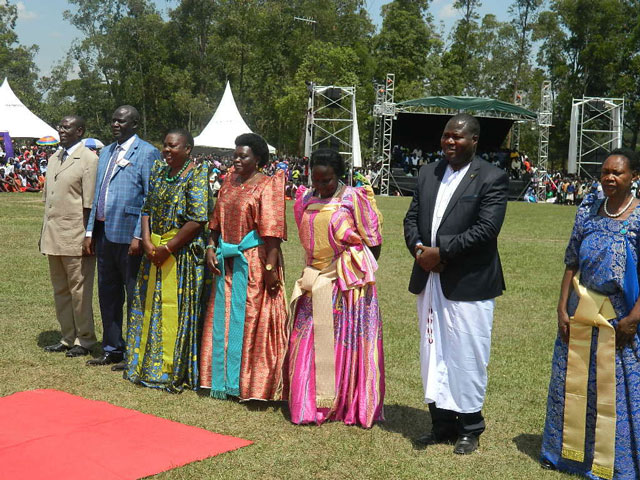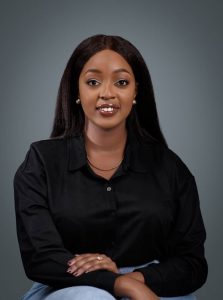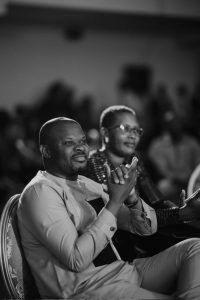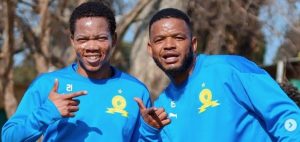Will old ‘Tororo Issues’ decide election results come 2026?

Current and former MPs of Tororo at the 2019 Kwar Adhola coronation anniversary at Achilet. PHOTO LOUIS JADWONG
COMMENT | LOUIS JADWONG | What was said at an ordinary visit to Tororo by President Yoweri Museveni last week could turn out to be decisive in the 2026 elections in the mineral-rich district.
President Yoweri Museveni, among other things, admonished ‘Badaama’ who do not want other tribes in the district to speak their language.
He had a point, but referring to the Jopadhola by a name used by their rivals, reignited fears that the President might not be sensitive enough to matters that have stagnated Tororo’s development politically and economically for two decades.
“The issue of friction between the Iteso and Badaama is puzzling. Why would a Mudaama have a problem with an Iteso speaking his own dialect and vice versa?” Museveni remarked.
The quest for districts and a city status have over decades divided residents of Tororo.
Former RDC and now on the Council of Elders of The Adhola Cultural Institution (TACI) Okoth Nyalulu remarked thus: “Many people, and without fear of contradiction, even the President, have not understood what is contentious in the ‘Tororo question’. The question is not a mere location of the Municipality or Jopadhola against Iteso per se.”
“It is a question of Rights. Through the history of migration, the Jopadhola have Heritage and Aboriginal Rights over the whole Tororo. Tororo was acquired and secured through pouring blood by our ancestors, and it became a Heritage for the Jopadhola,” he added.
On the quest for a city, Nyalulu stated, “Tororo Municipality was one of the eleven Municipalities that implemented the program of Uganda Support for the Municipal Infrastructure Development, (USMID). All the other ten have been elevated to City status except Tororo.”
Tororo Rock is at the heart of Tororo district and town
As the debate raged last week on social media, Kampala lawyer Charles Owor concluded that, “Badaama or Jopadhola, whatever you call us… Let us pursue how best to exploit the resources for everyone’s benefit, whether you arrived and settled in yesterday or were there yonks ago! We share a common destiny and strive to pursue common goals!”
The Deputy Prime Minster (Deputy Jago) of TACI, Jag Adrian Owor joined the debate, saying there is a misunderstanding about the issues in Tororo.
“I find the use of Teso in many comments about Tororo disturbing. Whereas there are Iteso living in Tororo district there is no Teso in Tororo. People should make a distinction between Iteso (the people) and Teso (a subregion which starts from Bukedea district to Katakwi),” he said.
The issue of Tororo county going away with the historical headquarters (Tororo Rock) of the Jopadhola has since been heated, with current Uganda Defence Minister Oboth Oboth, referring to the town as ‘our Jerusalem’ in parliament in 2019.
A team had earlier been sent to London to try resolve the impasse, but it came to naught.
“What took us to London archives was not about boundaries but the historicity of ethnic settlements in Tororo. The boundary dispute is between who and who? East Budaama and West Budaama, Jopadhola and Iteso live together. Both sides are mixed through inter-marriages,” Oboth argued in parliament.
On the same issue, Prof Pontian Okoth says “There is no fight between the Iteso and Japs, they have existed with each other for a long time and now genetically entangled, so the fighting was brought to divert the thinking. The Iteso in Tororo never came from Soroti but instead from Kenya as you can see in the map and have never had issues with the Japs.”
Status of Tororo district Constituencies
Ahead of 2026 decider! Tororo issues
Data compiled by Louis Jadwong Polls 2026 Ltd
(source VISIBLE POLLS.org)
NAME
INCUMBENT
Others
Tororo Municipality Constituency
Apollo Yeri Ofwono
National Resistance Movement
5,169 votes
Okware Edward
4,564 votes
Raganyi Ibrahim Yusuf
1,174 votes
Olweny Charles
1,034 votes
Emojong Deogratius
686 votes
Ayeyo Silvanus
182 votes
Othieno Romanus
78 votes
Ochwo Godfrey
67 votes
Kaikede Olowo John Stephen
36 votes
West Budama Central Constituency
Oboth Marksons Jacob
National Resistance Movement
Candidate (MP).
12,084 votes
Okoth Geoffrey Oita
7,610
Oturo Jesse Eridad
468 vote
Kirya Moses Isiko
376 votes
Onno Zachariah
167 votes
Oluka John Paul
103 votes
Laaro Peter Ayeka
50 votes
Oketch Ojiek Lazzarus
0 votes
West Budama South Constituency
Otiam Emmanuel Otaala
National Resistance Movement
13,648 votes
Owor Franklin
4,603 votes
Akika Emmanuel Othieno
3,527 votes
Katandi Joseph
739 votes
Ongawi Kennedy
386 votes
Oguti Albert Mathias
75 votes
West Budama North Constituency
Ochai Maximus
National Resistance Movement
10,981 votes
Othieno Okoth Richard
9,856
Owori John Paul
1,584 votes
Okello Peter Jabweli
784 votes
Alira David Pechokisika Opii
278 votes
Akichere Gloria Oburu
175 votes
Okongo Leo
85 votes
Aluki George
24 votes and lost the election
West Budama North East Constituency
Odoi Oywelowo Fox
National Resistance Movement
11,398
Ogandi Denis Peter
7,171 votes
Nyero Vincent
1,572 votes
Osinde Owor Okongo Jimmy
1,051 votes
Kayala Micky
176 votes
Osinde Benard
100 votes
Tororo North Constituency
Ekanya Geofrey
Forum for Democratic Change
9,674 votes
Nyakecho Annet
9,563 votes
Othieno Godfrey
5,834 votes
Ekileut James Peter
201 votes
Obbo Johnson
Independent
131 votes
Otabong Charles Jonjo
122 votes
Kalani Isaac
51 votes
Tororo women MP position
Achieng Sarah Opendi
Candidate for Women Representative (MP) – Tororo
National Resistance Movement candidate.
76,662 votes
Ayo Jancita
Independent
69,011 votes
Abbo Rose Mary Owere
7,398
Ojaka Diana
2,991 votes
Abwin Sarah Emojong
1,290 votes
Clamor for district
The clamor for districts in Uganda started in the 80s, and saw one of the then biggest districts in the country Tororo (once also called Budama and was part of Bukedi) reduced to a shell.
Residents of of Tororo county demanded a district that included Tororo town, and a man in Molo subcounty ate a live rat in front of President Museveni in 2005 to demonstrate their desire.
Elders of Padhola had no issue with a district being offered to those of Tororo country, but said it should not be linked to having Tororo town, now municipality, as their capital. They advised a new capital be named from their area.
President Yoweri Museveni also directed that the matter be resolved using the “colonial boundaries” in order to determine where the municipality should be located in the event of a split of the district.
Professor Oloka Onyango of Makerere University argued in 2017 that, “ Where a new district has been created, the towns/municipalities have remained the headquarters of the old “mother” district. All the new districts have established new headquarters. This has created a precedent followed without exception. “
” I appeal to the good sense of every citizen of Tororo specifically and Uganda in general to emerge from this narrow, sectarian and selfishly-motivated politicking. Has the creation of 78 new districts since 1995 really improved service-delivery at the local government level?,” Onyango argued in a 2017 presentation.
Map of West and East Budama, that was Tororo before independence
Origins of Tororo district
Bukedi District was a subdivision of the Eastern Province of the Uganda Protectorate, with headquarters in Mbale. In the early 1920s Bukedi was divided into the Budama, Bugisu and Bugwere districts.
These were recombined into Mbale District during World War II (1939–1945), then split in 1954 into a new, smaller Bukedi District to the west and Bugisu District to the east, sharing Mbale Township as their administrative headquarters. In 1968 the administrative headquarters of Bukedi District were moved to Tororo. Later Bukedi District was split up into a number of smaller districts.
In 1954 Bugwere and Bugisu were separated again, and Bugwere was again combined with Budama to create Bukedi District. The district contained the counties of Pallisa, Budaka-Bugwere, Bunyole, West Budama, Tororo, and Samia-Bugwe.
All these have in the 80s and 90s broken off, leaving Tororo, that once simply comprised of West and Eastern Budama, according the historian Prof Pontian Okoth in his book on the history of Padhola from 1500.
According to Prof Okoth, at some point, the colonial state was thrown into confusion by the state of disunity among Jopadhola clans and between the Jopadhola and the Iteso community based in Tororo.
The Nyapolo Ogule clan which was the dominant clan and predominantly catholic wanted to rule Padhola. This could not be allowed by the other clans, most of which were Protestants. They had many of their children who had obtained formal education, they also had the support of the colonial state.
The Iteso wanted to be recognized as an independent ethnic group.
The Jopadhola could not allow this kind of development noting Budama was their land. However the colonial state decided in 1938, to divide Budama County into East and West making two County headquarter for easy administration. West Budama remained with the original headquarter at Kisoko while East Budama had its headquarter at Mukuju. Both headquarters were equidistant (6 miles) from the Main Post office at Tororo. Both religions and inter-clan conflicts were serious problems in Padhola.
Despite all this, Tororo, being a key railway and road link to Kenya and the rest of the country was the third most powerful industrial town in Uganda by the time NRM came to power in 1986.
The rest of the people in Tororo preferred that instead of Tororo being part of the new district being demanded for, it instead becomes a city to serve all.
“Is there a demand for a City in Tororo and the answer is Yes. Tororo Municipality, and even the Town before it was the third most industrialized in Uganda and it is a gate way to Uganda by road and potentially by air,” elder Nyalulu remarked recently.
Kwar Adhola’s stand
Kwar Adhola Moses Stephen Owor, the King and cultural head of the Jopadhola, has been consistent on stating that Tororo is for everyone. Indeed Tororo was at one time referred to as the “United Nations of Uganda.”
President Yoweri Museveni greets Kwari Adhola, Moses Owori in 2019. PHOTO BY PPU/ENOCK KAKANDE
Kwara has previously had face to face discussions with both the late Emorimor Papa Osubani and the current one Emoloit and gave them the message; unity of purpose, even with diversity in cultures.
That has been his stand even in meetings with President Yoweri Museveni.
Kwar Adhola Moses Owor, now 98, has not shied from hailing Buganda for its show of support to the people of Tororo, and asked those in Tororo to emulate them.
“This is a challenge to us, it is a challenge, that today we live in an era where ethnicity and individualism have no place in society,” Kwar Adhola stressed.
“There is no reason why a few or others should deny the others the liberty and freedom of staying in Tororo, and living as a citizen of Uganda entitled to live anywhere.”
He concluded his message by saying “As king of the Jopadhola, I declare that all people of all races, of all ethnicities, whatever political colour, are welcome to Tororo municipality, and Tororo will be a mother, a second home now and forever.”
******
Louis Jadwong is a veteran journalist, now online content editor. He worked at the New Vision for over 20 years, and retired in December 2015. Currently executive member of St Mugagga Kabondo (Basic Christian Community BCC) and also Head of Information at St Angela Bugema Sub-parish that is part of Lweza Parish on Entebbe road.
Twitter (X) @JADWONG | Blog: https://ljfiles.blogspot.com/ | https://saintangellabugema.wordpress.com/ | St Mugagga (click to read)
The post Will old ‘Tororo Issues’ decide election results come 2026? appeared first on The Independent Uganda:.







